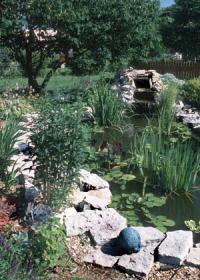Don't think 'yard,' think 'habitat'
Audubon Society urges Americans to fight habitat loss with their own gardens
Published: June 12, 2007 @ 01:12 PM CST from the
July/August 2007 issue of GRIT.
By: Grit Magazine

Each year, 2 million acres of bird and wildlife habitat are lost to residential and commercial use, displacing birds and other wildlife. In fact, the most significant factor in the decline of bird and wildlife populations across the United States is the loss and degradation of habitat.
The National Audubon Society urges all of us to consider wildlife when planting new gardens and planning landscapes. Factors to take into account are food, water, nesting areas and shelter – when these are available, people can slow the loss of wildlife habitats caused by urban sprawl.
provide safe habitat and help ensure a safe spring migration:
Photo Credit: Courtesy Lynn Betts/ USDA - Natural Resources Conservation Service
- Eliminate or reduce pesticide use – this reduces the toxins in water supply, soil and food sources.
- Conserve water – replace some grass with shrubs and native plants to reduce water usage in landscaping.
- Protect water quality – select landscape features and plants that will reduce water runoff, reducing the amount of pesticide and fertilizer that ends up in storm runoff.
- Remove exotic plant pests – non-native species compete with native flora and pose a
danger to native wildlife. Invasive plant, animal and microbial species are responsible for about 40 percent of the plant and animal species listed as endangered or threatened. - Plant native species – plants native to the region and ecosystem offer greater benefits to birds and other wildlife, and have fewer care requirements, so water consumption can be reduced, as can the need for fertilizer and pesticides.